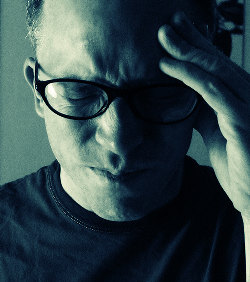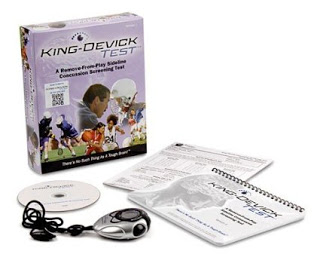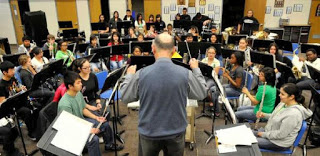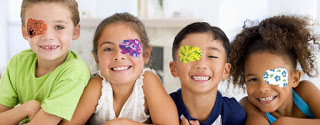MainosMemos
MainosMemos contains the latest research and information about eye and vision care of children, developmental disabilities, Traumatic/Acquired Brain Injury and other topics of interest to me (and hopefully you!).
Monday, September 12, 2016
Sunday, June 26, 2016
Sunday, January 17, 2016
USA Today Quotes Dr. Dominic Maino: 3-D movies hampered by vision problems for some
3-D movies hampered by vision problems for some
"...."There will be at least one person in the crowd who says, 'What are you talking about? I didn't see anything flying out at me.' Or maybe they will say, 'That movie actually made me a little nauseated,' " said Dominick Maino, a professor at the Illinois College of Optometry and the Illinois Eye Institute...."
"....Three to 9 million people in the USA have vision problems that keep them from enjoying such 3-D movies as Avatar and Toy Story 3, estimates the American Optometric Association. And as many as 56% of people between 18 and 38 years of age suffer from symptoms related to depth-perception problems.
"...."There will be at least one person in the crowd who says, 'What are you talking about? I didn't see anything flying out at me.' Or maybe they will say, 'That movie actually made me a little nauseated,' " said Dominick Maino, a professor at the Illinois College of Optometry and the Illinois Eye Institute...."
"....Three to 9 million people in the USA have vision problems that keep them from enjoying such 3-D movies as Avatar and Toy Story 3, estimates the American Optometric Association. And as many as 56% of people between 18 and 38 years of age suffer from symptoms related to depth-perception problems.
"....These problems have to do with binocular vision, the ability to align both eyes on a target and combine the visual images from the two eyes into a single, three-dimensional perception.
"We have 3-D because we have two eyes in our head in slightly different places," Maino explained. "When the brain puts two images together, that's when we get the 3-D effect."
"3-D is really our ability to judge distances," he said. "It's a real nice survival trait, so we could tell how far away that saber-toothed tiger is and have him for lunch rather than the other way around."...."
Several different vision disorders could be the cause of the problem, including:
• Amblyopia, or lazy eye, which occurs when one eye does not see as well as the other. "Because of that difference between the two eyes, the ability to see 3-D is greatly reduced or absent," Maino said.
• Strabismus, or crossed eyes, in which the eyes do not line up in the same direction when focusing. Ultimately, a person with strabismus begins to suffer from double vision or loses the ability to see in 3-D.
• Convergence insufficiency, in which the eyes are incapable of turning toward each other to fix on the same distance.
Any of these can be treated by an optometrist or ophthalmologist. In fact, Maino said, the new 3-D movies are giving some people their first clue of a vision problem they may have had for a long time without recognizing it.
The problems, though, can be treated using optometric vision therapy, in which eye patches or special pairs of glasses are utilized to teach the eyes how to work together, Press and Maino said. Some of the techniques already are used to help kids with amblyopia or strabismus.....
By the end of vision therapy, "we should have someone who has single, clear, two-eyed vision," Maino said...."
Tuesday, January 12, 2016
Perceptual visual dysfunction, physical impairment and quality of life in Bangladeshi children with cerebral palsy
Perceptual visual dysfunction, physical impairment and quality of life in Bangladeshi children with cerebral palsy
Perceptual Visual Development is an important contributor in reducing quality of life in children with CP, independent of motor disability and acuity impairment. Better characterization of PVD is important to help design interventions for affected children, which may improve their quality of life.
Saturday, September 12, 2015
Vision testing an effective tool for detecting concussion on the sidelines
Vision testing an effective tool for detecting concussion on the sidelines
....Vision encompasses a large component of the brain’s pathways, yet is
not represented in current
sideline testing. .... A meta-analysis
of published data for a vision-based test of rapid number naming (King-Devick [K-D]
test)...Noted that rapid number naming adds to sideline assessment
and contributes a critical dimension of vision to sports-related concussion testing....
Wednesday, July 22, 2015
How music alters the teenage brain
How music alters the teenage brain
- Music enhances the teenage brain's response to sound; sharpens language skills
- Band class had larger effect on brain than fitness-based ROTC training
- Results highlight music's place in the high school curriculum
- 'Music may engender what educators refer to as learning to learn'
Comment: So why are music and the arts the first to get cut from school programs? Makes no sense does it? Support the arts in school, in the community, in your life! DM
Sunday, July 19, 2015
King-Devick Test Accurately Detects Concussions in Youth Athletes
King-Devick Test Accurately Detects Concussions in Youth Athletes
In the study of high school football, researchers baseline tested over 300 student athletes across Southeast Michigan high school football teams. During the study, nine athletes were diagnosed with concussion. In all concussed athletes, King-Devick test performance was significantly worse than their baseline indicating the simple sideline tool is highly accurate in detecting concussion.
More than 8000 miles away in New Zealand, a study of youth rugby, tested athletes with the King-Devick Test after matches to screen for unwitnessed, unreported concussions. In their previous work, researchers found unwitnessed concussion to have a nearly 6 times greater incidence than witnessed, reported concussions when regular post-match screening with King-Devick Test was used. The findings were similar in this group of 9 and 10 year old athletes. There were 7 instances of worse King-Devick Test performance after a match and all were medically identified concussions. Also similar to previous studies, an examination of the reliability of retest or tests conducted by different testers showed that the King-Devick test has high reliability.
These studies further validate the King-Devick test as an accurate and easy to administer sideline screening tool for concussion which is particularly useful in younger athletes that are at higher risk of concussive injury and are not always afforded health care professionals on the sidelines. There have been more than 50 peer reviewed studies regarding the King-Devick Test which have been recently released.
Oakbrook Terrace, IL - A quick, accurate screening tool for concussion detection which can be easily performed on the sidelines has been further validated in a two recent studies published in the peer reviewed Journal of the Neurological Sciences on June 13, 2015 and July 2, 2015 respectively. These studies evaluate sideline/pitch side screening of concussions in adolescent football and youth rugby. The King-Devick Test, a concussion tool screens for the often subtle signs of brain injury that disrupt the eyes' ability to accurately and efficiently move across a page upon the brain's command. Athletes are asked to read aloud single-digit numbers displayed on standardized test cards available electronically via mobile iPad and Android devices. The King-Devick in association with Mayo Clinic, requires smooth and precise eye movements between number targets, concentration, attention, recognition and rapid language ability, all of which can be affected during concussion.
In the study of high school football, researchers baseline tested over 300 student athletes across Southeast Michigan high school football teams. During the study, nine athletes were diagnosed with concussion. In all concussed athletes, King-Devick test performance was significantly worse than their baseline indicating the simple sideline tool is highly accurate in detecting concussion.
More than 8000 miles away in New Zealand, a study of youth rugby, tested athletes with the King-Devick Test after matches to screen for unwitnessed, unreported concussions. In their previous work, researchers found unwitnessed concussion to have a nearly 6 times greater incidence than witnessed, reported concussions when regular post-match screening with King-Devick Test was used. The findings were similar in this group of 9 and 10 year old athletes. There were 7 instances of worse King-Devick Test performance after a match and all were medically identified concussions. Also similar to previous studies, an examination of the reliability of retest or tests conducted by different testers showed that the King-Devick test has high reliability.
These studies further validate the King-Devick test as an accurate and easy to administer sideline screening tool for concussion which is particularly useful in younger athletes that are at higher risk of concussive injury and are not always afforded health care professionals on the sidelines. There have been more than 50 peer reviewed studies regarding the King-Devick Test which have been recently released.
More information is available here: http://www.kingdevicktest.com/
Friday, July 17, 2015
Stereopsis and Amblyopia
Stereopsis and Amblyopia: Expert Comments from my Friend and Colleague Susan Barry, PhD
This paper by Levi and colleagues challenges two assumptions that have persisted in the medical literature for the past 2 centuries. The first is that the principal deficit in amblyopia is reduced visual acuity in the affected eye so that the optimal treatment is occlusion of the non-amblyopic eye. However, current research suggests that amblyopia results from poor binocular cooperation between the two eyes, leading, not only to reduced visual acuity in the affected eye, but also to reduced or absent stereopsis. Accordingly, the authors reviewed the impact of amblyopia on stereopsis and the consequences of reduced or absent stereopsis on visuomotor skills, career opportunities, and self-image. Occlusion therapy, even if it results in enhanced visual acuity in the amblyopic eye, produces only modest improvements in stereopsis.
Treatment for amblyopia has traditionally been applied only to children because it was generally assumed that the visual system is malleable only during a critical period in early childhood. However, as the authors point out, a large degree of plasticity in the very young brain does not imply that plasticity comes to an end after childhood. Indeed, the authors review 21 experimental treatments involving 259 individuals, mostly adults. These studies involved monocular and dichoptic perceptual learning protocols, monocular and dichoptic videogame play, and direct stereo training. Across all treatments, 55% of anisometropic amblyopes and 26% of strabismic amblyopes showed substantial improvement in stereoacuity after training, with the dichoptic and direct stereo training protocols proving the most effective.
In summary, Levi and colleagues provide evidence that amblyopia can be treated in adulthood. Limited recovery from amblyopia to date may result from the narrow scope of treatments standardly available and an overly pessimistic view of adult visual plasticity.
Monday, July 13, 2015
Return to Learn: A Guide to Visual Recovery from Concussion
Children and adults are vulnerable to concussion if they play sports or were involved in an accident. Current research suggests the following approach for the vision problems noted to be present after injury.
To find a doctor who can help go to http://www.COVD.org
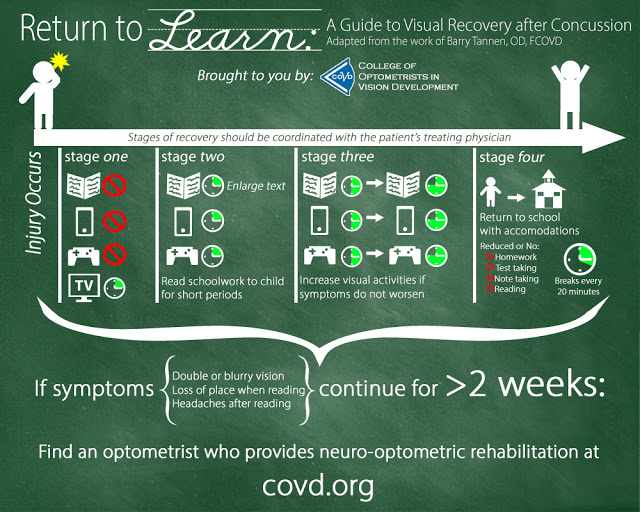
To find a doctor who can help go to http://www.COVD.org

Sunday, July 12, 2015
Photorefractive keratectomy on purely refractive accommodative esotropia
Photorefractive keratectomy on purely refractive accommodative esotropia
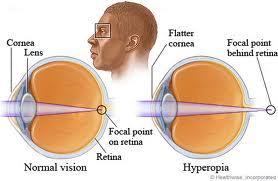 "....this ...study comprised patients with purely accommodative hyperopic esotropia. Patients underwent a ... ophthalmologic examination that included pre-operative and post-operative best corrected visual acuity (BCVA) and uncorrected visual acuity....A two-year follow-up showed that photorefractive keratectomy was an effective treatment for esotropia associated with mild to moderate hyperopia in young adults with purely refractive accommodative esotropia......"
"....this ...study comprised patients with purely accommodative hyperopic esotropia. Patients underwent a ... ophthalmologic examination that included pre-operative and post-operative best corrected visual acuity (BCVA) and uncorrected visual acuity....A two-year follow-up showed that photorefractive keratectomy was an effective treatment for esotropia associated with mild to moderate hyperopia in young adults with purely refractive accommodative esotropia......"
Comment: If the subjects were "pure accommodative esotropes," why do surgery when a simple pair of glasses would correct the problem especially since they had moderate hyperopia? DM
Subscribe to:
Posts (Atom)
